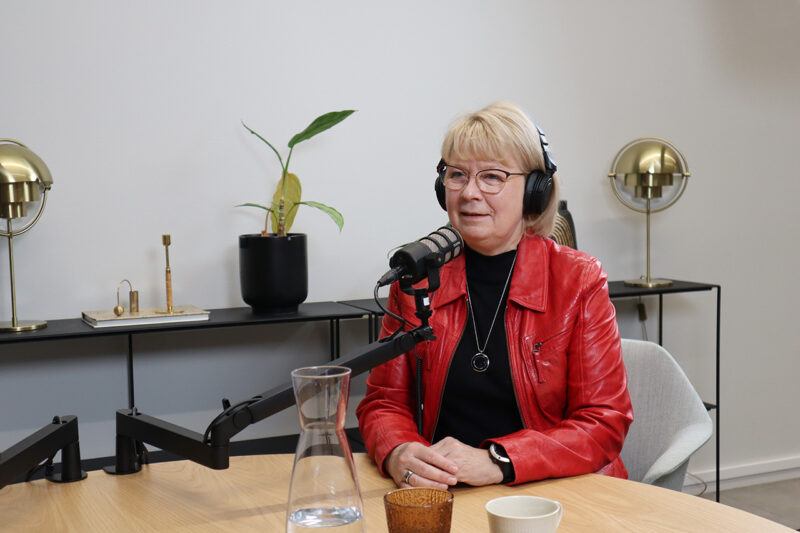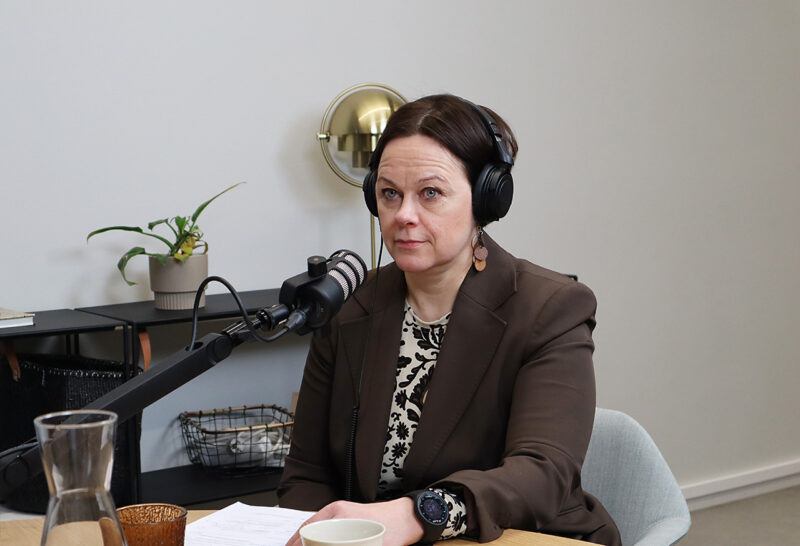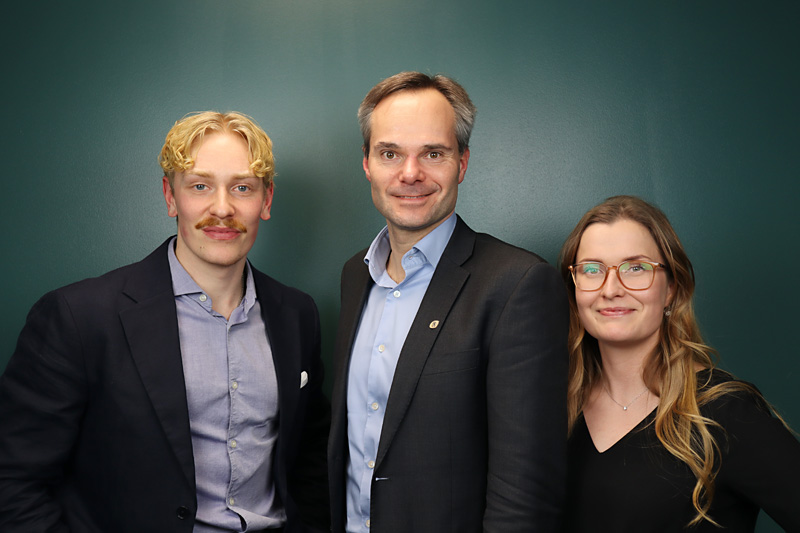Strengthening and developing the electricity transmission grid is essential for the industry’s clean transition

The increasing demand for electricity production and consumption also raises the need for electricity transmission, placing pressure on the national grid. Fingrid’s CEO, Asta Sihvonen-Punkka, joined Fimpec’s Kumppanit podcast to discuss the state of the national grid with Maiju Aaltonen and Panu Rahikka. The discussion covered how Fingrid is addressing these challenges by investing in the grid and optimizing the use of the existing network through new innovations and economic steering mechanisms.
The clean transition, the rise of emission-free electricity production, the hydrogen economy, new data centers, and the electrification of district heating significantly increase electricity production, consumption, and transmission needs. The scale of this transformation is illustrated by the fact that in 2024, Fingrid had connection inquiries for 400 GW of production capacity, compared to just 50 GW in 2020. Similarly, by the end of 2024, Fingrid had received connection inquiries for 60 GW of electricity consumption.
“These figures clearly reflect the transformation but also demonstrate how attractive Finland is as a producer of clean electricity and the immense potential we have,” says Fingrid’s CEO, Asta Sihvonen-Punkka.
This development presents challenges for Finland’s national grid, which has been a key enabler of green electricity production growth. The grid’s role is particularly crucial because Finland is a large country where electricity production and consumption often occur in different locations.
“In recent years, a massive amount of clean electricity production has been connected to the national grid along the west coast and in Ostrobothnia, where wind power production is concentrated. Additionally, the Olkiluoto nuclear power plants are located on the west coast. Meanwhile, electricity consumption is primarily concentrated in Southern Finland. As a result, the main electricity transmission routes are from the west and north to the south. Northern Finland also plays a significant role as it hosts most of Finland’s hydropower and transmission connections from Sweden,” Sihvonen-Punkka explains.
A €4 billion development program
To ensure the reliability of the national grid, the main transmission routes must be strengthened, and new connections must be established. According to Sihvonen-Punkka, Fingrid is responding to this need with a continuously expanding investment program.
“We are implementing a comprehensive 10-year grid development program worth €4 billion. This means an average annual investment of €400 million, compared to our previous yearly investments of about €100 million. These figures illustrate the increasing need for electricity grid development.”
However, new investments do not offer an immediate solution to the growing transmission demands. Sihvonen-Punkka estimates that, under ideal conditions, it takes 7–8 years to commission a new transmission line from the planning phase. She emphasizes the importance of anticipation and collaboration with electricity producers and consumers planning investments.
“It is crucial that investors and project developers contact us as early as possible. For new investment sites, we can then assess which locations are favorable for the grid—where conditions for connection are already in place or relatively easy to establish.”
“The transition of industrial plants to lower emissions can also significantly increase their electricity demand. In such cases, early communication is essential so that we can integrate these projects into our development plans.”
Maximizing the existing grid’s capacity
To meet increasing electricity transmission needs, Fingrid is not only building new connections but also optimizing the capacity of the existing grid. According to Sihvonen-Punkka, several methods are being used to achieve this.
“We are deploying Dynamic Line Rating (DLR) technology, which provides more accurate data on the actual load capacity of the transmission grid under different weather conditions. With the increase in wind and solar power, we are installing a synchronous compensator (a large synchronous machine without an energy source) at the Jylkkä substation in Kalajoki to support grid voltage and frequency stability.”
“Capacity can also be influenced by setting requirements for electricity producers connecting to the grid. For instance, we have started requiring grid-forming capabilities from energy storage facilities connected to the network. Ensuring the functionality of the electricity grid is not just Fingrid’s responsibility—it’s a collaborative effort where electricity producers and consumers also play a role in building the energy system of the future.”
Pricing incentives and market adjustments
Electricity grid functionality can also be improved through pricing mechanisms. According to Sihvonen-Punkka, Fingrid is currently developing connection pricing models that incentivize strategic siting of new projects.
“We need to consider that Finland has different energy regions. Some areas, such as Western Finland, experience electricity overproduction, while consumption is much higher in Southern Finland. In contrast, Eastern Finland has a more balanced electricity market. Connection pricing should encourage new production in Southern Finland or increased consumption near production sites in the west.”
“In June 2025, we will transition to a 15-minute trading period in the electricity day-ahead market. This change is expected to enhance the electricity system’s adaptability to fluctuations in energy production and consumption while improving price formation accuracy.”
Imported electricity and energy storage enhance supply security
The discussion also covered the role of imported electricity and energy storage. While Finland may become electricity self-sufficient on an annual basis, Sihvonen-Punkka believes that cross-border electricity connections will remain crucial.
“International transmission links are essential for the flexibility and security of the electricity system, even if net imports over the year remain low. These connections allow us to import electricity in tight situations and provide an export route for surplus wind power when needed. We are currently constructing a third AC connection between Finland and Sweden in the north, and planning for the next one is already underway.”
Energy storage is an emerging grid-balancing solution, and its significance is rapidly growing. This is evident in Fingrid’s connection inquiries, which included 20 GW of energy storage projects in 2024—up from about 5 GW the previous year.
“Energy storage is crucial because production variability has increased. Storage allows us to capture inexpensive clean electricity and release it into the grid during periods of higher demand. Especially for short-term fluctuations, energy storage solutions are exceptionally well-suited,” says Sihvonen-Punkka.
Regulatory challenges in the electricity grid sector
The electricity market is undergoing rapid and significant changes, and Sihvonen-Punkka sees the current economic regulatory framework for grid operations as one of the biggest challenges.
“In 2024, we transitioned to a new four-year regulatory model, which will be followed by another four-year period—a total of eight years. Looking back, development has been extremely fast-paced, making it feel like we are constantly half a step behind. The regulatory model should enable necessary investments and support the clean transition. However, the current framework restricts our investment capacity and financial flexibility.”
Another major challenge is the permitting process. Sihvonen-Punkka emphasizes that the permitting system must be as flexible as possible.
“Permitting procedures should not delay or obstruct the construction of these critical transmission and connection infrastructures. We are, in reality, building a cleaner world, and this requires significant investments in the electricity grid.”
Asta Sihvonen-Punkka appeared as a guest on the “Kumppanit” podcast with hosts Maiju Aaltonen and Panu Rahikka.
Listen to Kumppanit podcast episode 16: How is the Finnish electricity transmission grid adapting to the clean transition of industry? Please note that the podcast is available only in Finnish.


